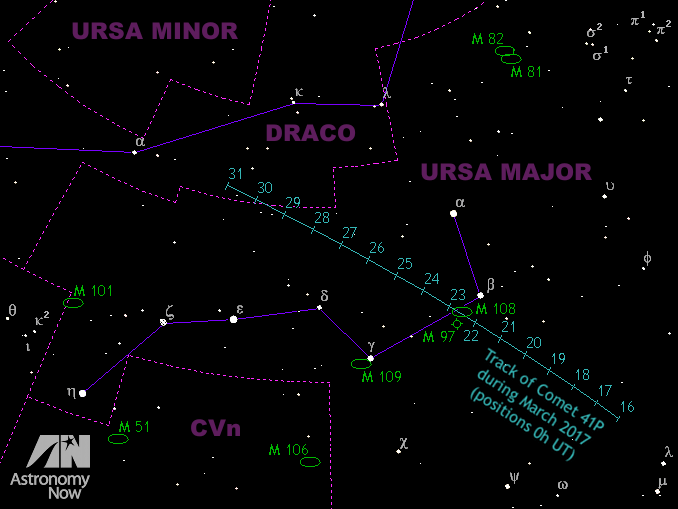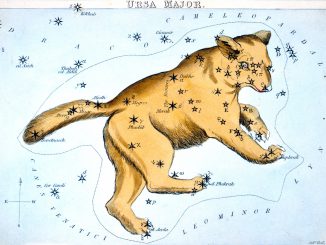
Now that the waning gibbous Moon is confined to the early morning sky, observers can make the most of the dark evenings to catch a brightening comet that is very well placed for Northern Hemisphere stargazers. Discovered in 1858, 41P/Tuttle–Giacobini–Kresák is a periodic comet that orbits the Sun every 5.4 years and will pass through perihelion (its closest point to the Sun) on 12 April 2017.

Comet 41P is well worth a look with binoculars and telescopes using your lowest magnification eyepiece, as increased outgassing from its mile-wide icy nucleus can give rise to surges in brightness. In late May 1973, the comet flared ten magnitudes to peak at a comfortable naked-eye magnitude +4 — an incredible 10,000 times brighter over the course of a week! Of course, that doesn’t mean Comet 41P will do the same this time around, but one never knows.
Click here for a high-resolution PDF version of the finder chart above. Comet 41P passes just 0.14197 astronomical units (13.2 million miles; 21.2 million kilometres) from Earth at 00:53 UT on 1 April. This is equivalent to 55 times the distance of the Moon. More on that — and the comet’s close encounters with some prominent stars in the constellation of Draco — nearer the time.

Inside the magazine
For a comprehensive guide to observing all that is happening in the coming month’s sky, tailored to Western Europe and North America, obtain a copy of the March 2017 edition of Astronomy Now.
Never miss an issue by subscribing to the UK’s biggest astronomy magazine. Also available for iPad/iPhone and Android devices.




